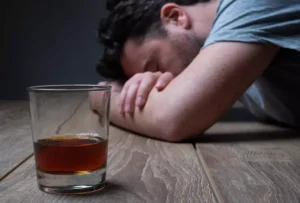
The Assistant Secretary for Mental Health and Substance Use Dr. Delphin-Rittmon speaks to the millions reclaiming their lives from substance use and mental health conditions. In the 1980s, animal studies discovered that naltrexone also reduced alcohol consumption. These showed that when combined with psychosocial therapy, naltrexone could reduce alcohol cravings and Alcohol and Pills decrease relapse rates in alcoholics. As shown in COMBINE, no single medication or treatment strategy is effective in every case or in every person. Older people do not break down medicines as quickly as younger people, and are often on more than one medication. The chemicals in your brain maintain a delicate balance between excitation and inhibition.
- The risk of addiction and how fast you become addicted varies by drug.
- Juxtapid (lomitapide) is a medication used in patients with an inherited (genetic) type of high cholesterol known as homozygous familial hypercholesterolemia.
- If you want to stop drinking, Nancy Beste, an addiction therapist in Steamboat Springs, Colorado, recommends talking to your doctor about the best way to do so.
- Use bupropion extended-release (SR) tablets during pregnancy only if potential benefit justifies potential risk to the fetus.
- Combining a medicine that acts on the brain with alcohol may make driving a car or operating heavy machinery difficult and lead to a serious accident.
- Three drugs have FDA approval for alcohol use disorder, and each works differently.
National Institute on Alcohol Abuse and Alcoholism (NIAAA)
- If you do want to drink alcohol while being on medication, discuss it with your doctor or pharmacist first.
- The effects of these drugs can be dangerous and unpredictable, as there is no quality control and some ingredients may not be known.
- Protect yourself by avoiding alcohol if you are taking a medication and don’t know its effect.
- American Addiction Centers (AAC) is committed to delivering original, truthful, accurate, unbiased, and medically current information.
- Medications prescribed to lower cholesterol levels (known as statins) can cause flushing, itching, stomach bleeding, and liver damage.
The package insert for Praluent (alirocumab) and Repatha (evolocumab) do not list alcohol (ethanol) as a possible drug-drug interaction. However, these agents work in the liver and https://ecosoberhouse.com/ Praluent has been linked with elevated liver enzymes, which may signal liver toxicity. The medications listed below are related to or used in the treatment of this condition.
Cholesterol Medications and Alcohol: Can You Mix Them?
A person taking naltrexone does not experience the pleasurable effects of alcohol. It is an opioid antagonist, meaning that it blocks the body’s natural “feel-good” chemicals, which it releases when a person drinks. A person typically begins using acamprosate on the fifth day after they stop drinking, with the medication reaching full effectiveness in 5-8 days. A person takes this medication three times a day or as a doctor advises. For serious alcohol use disorder, you may need a stay at a residential treatment facility. Most residential treatment programs include individual and group therapy, support groups, educational lectures, family involvement, and activity therapy.

Pills can help some people quit — or curb — their drinking

If you have diabetes, drinking alcohol can affect your blood sugar levels. Drinking alcohol with the medications you take to manage your diabetes can have the same effect, and the mix can also cause symptoms like nausea, vomiting, headache, rapid heartbeat, and sudden changes in your blood pressure. Drowsiness and dizziness are common side effects of medications used to treat allergies, colds, and the flu. When the substances are combined, the effect is intensified, and your judgment and focus will be further impaired. Medications used to treat insomnia or help you fall and stay asleep should never be mixed with alcohol. The sedating effect of these drugs can be increased by alcohol, leading to slowed or impaired breathing, impaired motor control, abnormal behavior, memory loss, and fainting.
Alcohol Interactions: A Significant and Increasing Danger

Although there’s no cure for drug addiction, treatment options can help you overcome an addiction and stay drug-free. Your treatment depends on the drug used and any related medical or mental health disorders you may have. Diagnosing drug addiction (substance use disorder) requires a thorough evaluation and often includes an assessment by a psychiatrist, a psychologist, or a licensed alcohol and drug counselor. Blood, urine or other lab tests are used to assess drug use, but they’re not a diagnostic test for addiction. However, these tests may be used for monitoring treatment and recovery. Feeding the problemOnce people get hooked on prescription drugs, it is fairly easy for them to stay addicted.
- Despite being aware of these harmful outcomes, many people who use drugs continue to take them, which is the nature of addiction.
- Due to the toxic nature of these substances, users may develop brain damage or sudden death.
- This announcement includes more than $16 million for behavioral and primary health care integration and more than $24 million to expand capacity for drug treatment courts.
- Steady-state plasma concentrations of bupropion achieved within 8 days.
Small amounts of alcohol can make it dangerous to drive, and when you mix alcohol with certain medicines you put yourself at even greater risk. Combining alcohol with some medicines can lead to falls and serious injuries, especially among older people. The manufacturer’s labeling should be consulted for more detailed information. The American Society of Health-System Pharmacists, Inc. does not endorse or recommend the use of any drug.
Learn more about Alcohol Use Disorder
- Blood, urine or other lab tests are used to assess drug use, but they’re not a diagnostic test for addiction.
- Potential pharmacokinetic interaction (altered serum concentrations of bupropion) with drugs that induce or inhibit CYP2B6.
- It involves family and friends and sometimes co-workers, clergy or others who care about the person struggling with addiction.
- A doctor works with a person to determine which medications are right for them based on their individual needs.
- Safety in patients with recent history of MI or unstable heart disease not established.
- They’re often used and misused in search of a “high,” or to boost energy, to improve performance at work or school, or to lose weight or control appetite.